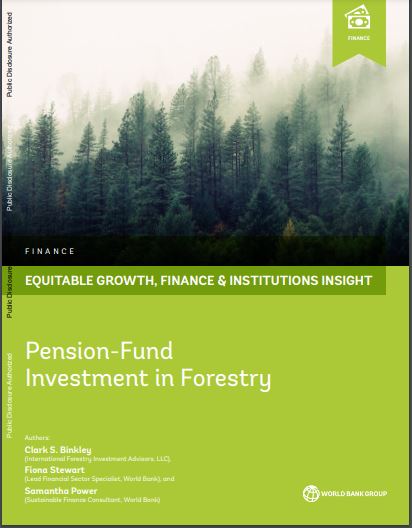Pension-Fund Investment in Forestry
By Clark S. Binkley, Fiona Stewart and Samantha Power A forestry investment can include land suitable for growing trees, the trees themselves, or both. The trees can be part of a natural forest or one that has been established artificially by seeding or planting. Natural forest management typically has lower operating costs than plantation forests, but also a lower growth rate. Plantation forests are typically, but not always monocultures. Forestry has long provided opportunities for institutional investors – but the scope...










